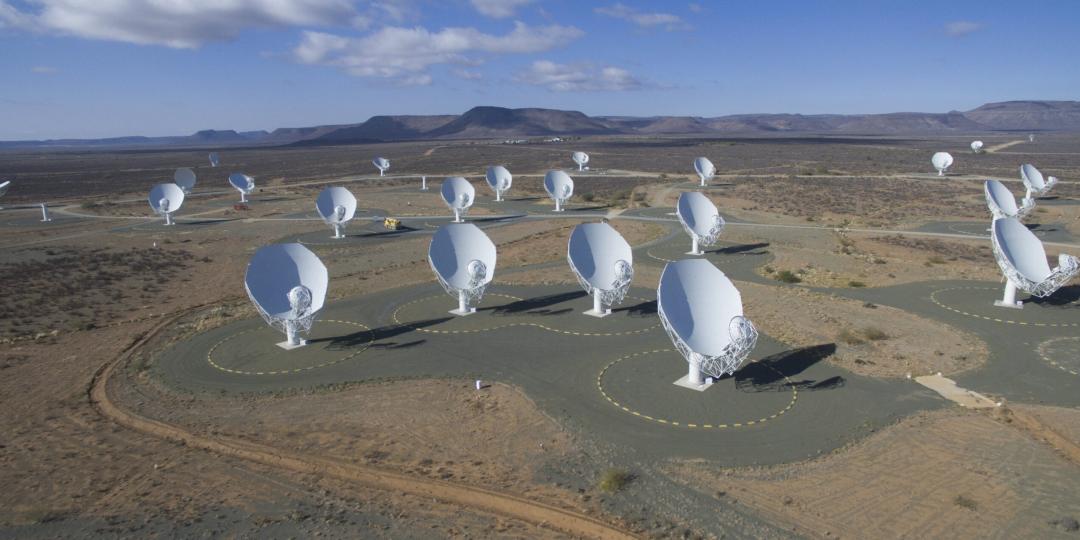South Africa has been proactive in leveraging the significant advances made in the development of the world’s largest space telescope array in the Northern Cape, with a comprehensive astro-tourism set to be submitted to Cabinet for approval.
Outside the small town of Carnarvon is the South African site (called MeerKAT) of the Square Kilometre Array (SKA), a global mega-infrastructure project that endeavours to build the most powerful radio telescope in the world. Since the start of construction in both South Africa and Australia (the site for the project’s other array of satellites) in December 2022, a total of 64 satellite dishes have been built at MeerKAT. Phase 1 of the project will see 210 dishes being built in South Africa by 2028.
The astro-tourism strategy seeks to capitalise on the global significance of the project and the wider region’s attractiveness as a stargazing destination, building on the seeds of tourism success sown in pockets such as Sutherland – home to the largest single optical telescope in the world – the Southern African Large Telescope (SALT).
The strategy was developed by the Department of Science and Innovation (DSI), the Department of Tourism and the Northern Cape provincial government.
In the pipeline for two years, the strategy seeks to “develop and position an inclusive astro-tourism sector that will yield sustainable benefit-sharing opportunities by maximising on marketing efforts and enhancing visitor experience in South Africa”.
In a briefing to Parliament’s Portfolio Committee on Higher Education, Science and Innovation on March 1, DSI Chief Director of Astronomy, Takalani Nemaungani, said the strategy had been built around funded projects valued at R138 million (€6.6m), including the Carnarvon SKA Science Visitor Centre and the Wits Digital Dome at Wits University in Johannesburg.
Consisting of an interactive science centre and planetarium, the SKA Visitor Centre has been allocated a budget of R62m (€3m) and is due to be completed by 2027.
“Detailed engineering plans are being finalised and we hope to secure approval in the coming weeks so that we can submit the project for tender and start groundwork this year,” said Nemaungani.
The Wits Digital Dome, which will act as a Gauteng-based node for astro-tourism through education, outreach and marketing of opportunities in the field, has been allocated R75m (€3.7m). An additional R200 000 (€9 800) has been earmarked for the construction of a stargazing platform and the training of a tourist guide at !Xaus Lodge in the Kgalagadi Transfrontier Park.
In 2023/24, a total of R400 000 (€19 600) will be spent on tourism enterprise development and the training and registration of additional guides.
Nemaungani added that an additional R132m (€6.5m) was being sought to fund other projects in the region.
“We are looking at how to unlock funding opportunities through existing funding instruments, and we’re engaging with National Treasury to see if an astro-tourism fund can be established in the medium to long-term.”
Speaking at the 2023 Tourism Investment Forum Africa, Deputy Minister of Tourism Fish Mahlalela stressed that the strategy formed part of wider plans to grow the regional and continental astro-tourism sector.
“The continent needs to benefit from the opportunities brought about by astro-tourism due to its low levels of industrialisation – we therefore need to use our weakness as a strength to develop new industries working and including development finance institutions and the private sector taking advantage of commercial opportunities that will be unlocked by these government-driven initiatives.”
International benchmarking that informed the strategy included examples from the United States, China, the UK, Australia and New Zealand, but also explored initiatives on the African continent, in Botswana, Egypt, Kenya, Namibia and Morocco.
Engaging communities and developing infrastructure
One of the three key pillars of the strategy is the weaving of indigenous celestial narratives into the scientific aspects of astronomy and the development of human capacity such as tourist guiding.
“South Africa has a rich history of unique starlore, with each culture having its own interpretation. The recording, reclamation and representation of indigenous and historical stories will be integrated into the astro-tourism offering, along with SMME development and local ownership,” Nemaungani pointed out.
It is anticipated that the SKA and its associated projects will vastly improve infrastructure such as roads and water and electricity supply, and lead to demand for more accommodation and hospitality establishments.
Nemaungani said public consultations had revealed resounding support for the strategy.
“Overall, stakeholders supported the strategy and felt that the process was exciting and imperative to local economic development.”
Sutherland’s success story
The strategy will build upon existing astro-tourism offerings, such as those found in the Northern Cape town of Sutherland. SALT and its observatory have become the primary tourism drawcard of the town, while an additional range of stargazing experiences have been introduced by local businesses.
“More than half of visitors to Sutherland come to experience astro-tourism. Demand during the peak season of June, July and August exceeds the capacity of the observatory, so many operators are making use of amateur telescopes and attractions provided by local communities,” Nemaungani said.
The town’s tourism and hospitality industry has bought into the astronomy theme, with establishments featuring names such as Jupiter Restaurant, Sterland (Star Land) and Southern Cross.
Nemaungani said astro-tourism had created 302 direct jobs in Sutherland and led to the employment of eight youth as guides.
“We want to build on this success story and continue to work with the Sutherland community to see how we can further enhance the experiences on offer.”























